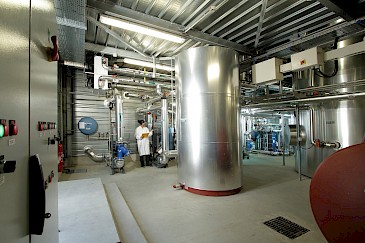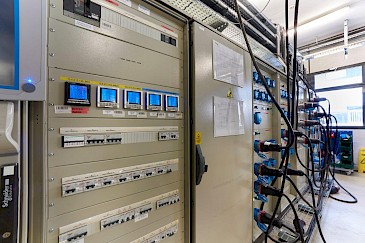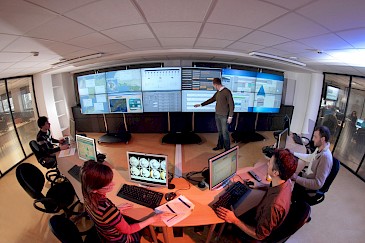Digital platform for simulation and optimisation of complex systems management
Low-voltage electric micro-grid, equipped with SCADA, with 6 independent sub-grids, 150 kW of configurable solar fields, 120 kVA/160 kWh storage capacity, generators with a power of 130 kVA
Power Hardware-In-the-Loop platform: 4 real-time targets, photovoltaic simulators (200 kW), storage (250 KVA), grid (45 kVA), and load (130 kVA)
20 charging points for electric vehicles
INCAS platform: experimental equipment on scale 1 in outdoor climate : analysis of 200 monofacial and bifacial panels on adapted supports limiting the effects of shading on the rear face, 17 strings of 3 to 4 kWp equipped with 20 reference cells (front and rear faces), around twenty temperature probes per monitored system, 17 current and voltage measurement systems, a field for analysing the panels in a vertical position, unit modules for measuring I-V curves, a 1-axis tracker, a pyranometer, several floor coverings for albedo analysis, 4 experimental houses of 100 m² each.
CALORIE : Experimental heat and cold micro-network, equipped with a SCADA system, with 2 independent heat and cold networks, different means of producing heat (300 m² of solar thermal collectors, 50 kW thermofrigopump, 280 kW condensing gas boiler) and cold (50 kW thermofrigopump), 100 kW absorption machine), thermal storage solutions (sensitive hot 40 m3 and cold 5 m3), and semi-virtual benches enabling loads to be emulated to test innovative substations (bi-directional, low-temperature, etc.).



